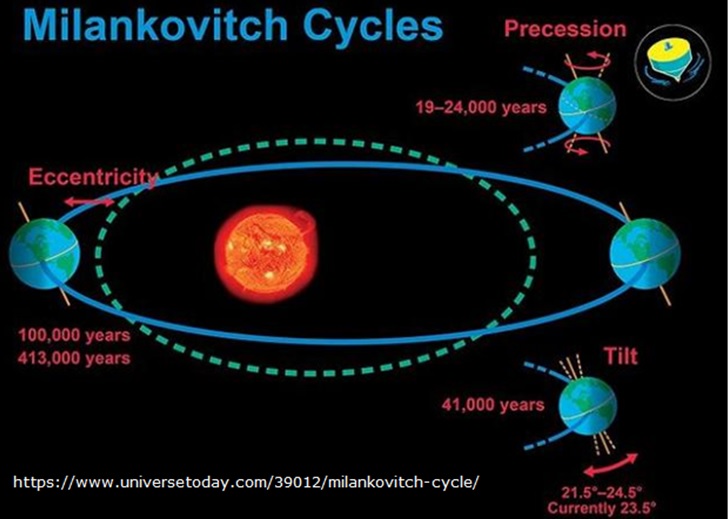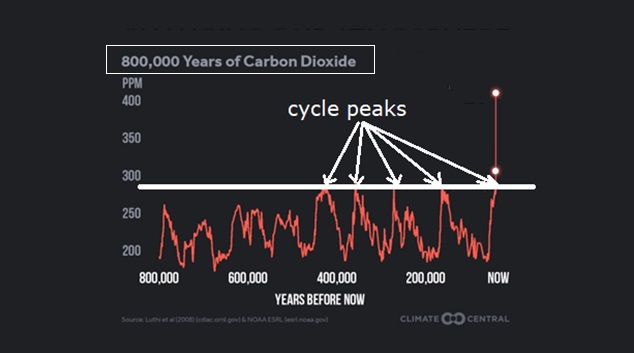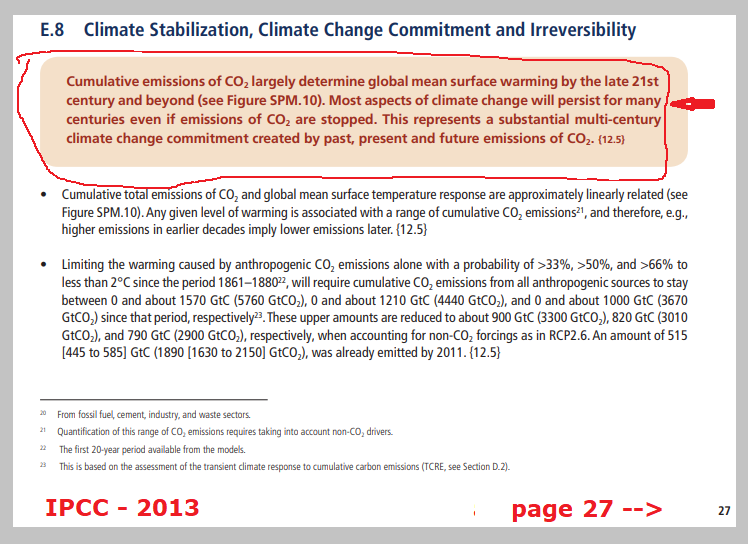Main theory
Main Theory
MAIN THEORY
1) The Earth has been for approximately 6500 years on its upcycle, being in its closest position to the Sun, which happens every 100,000 years. These cycles were discovered/calculated by Serbian mathematician Milankovitch.

When the Earth's location is the closest to the Sun the temperature, the carbon dioxide and methane in the atmosphere levels, and the sea level are on their highest levels due to the Sun's radiation's stronger impact.

2) Thus, the Earth was at its top saturation point but still within its state of thermodynamic equilibrium, where climate on Earth can be considered a thermodynamic system with a thermodynamic equilibrium with "a particularly important concept for the system with thermodynamic equilibrium, in which there is no tendency for the state of that system to change spontaneously" (rephrased from Encyclopedia of Brittanica).
However, at the beginning of 1900's, something "spontaneous" actually happed and the average surface temperature, levels of methane and carbon dioxide gases and the levels of sea drastically changed their trends and started sharply increasing since that moment.

3) Such drastic changes in trends could not happen by the nature of itself, because the nature was in its thermodynamic equilibrium, thus something happened from outside. Alexander Kupershmidt, a founder of the Blue Glaciers Rescue Foundation, explains this change in climate due to several known and unknown events, one of which was Tunguska Event, which happened on 6/30/1908. It is almost impossible to understand how fragile the climate on Earth is. It was actually stated several times in his lectures by Prof. Richard Alley from Penn State University. Also, we can compare it with the wild fires. If the forest is dry and there is a strong wind, and a person drops one single match, then the acres and acres of forest would burn in instant. The same situation was in the climate on Earth, when the Earth was "ready" for its troubles, being for 6500 years on the top of the Milankovitch Cycle at its point of saturation of gases and top temperature for that thermodynamic level of equilibrium.
4) The only one scientist offered somewhat similar explanation for global warming was Vladimir Shaidurov of the Russian Academy of Sciences,
in his presentation at the University of Leicester (UK) in 2005. He was highly criticized for his theory. In fact, the issue with his theory was that he implied that Tunguska Event changed the balance in the certain levels in the atmosphere, increasing water vapor gas level. He properly mentioned that even increased of 1% of the water vapor gas in the atmosphere could bring a significant chant to the climate on Earth, however, not addressing the issue that this extra 1% of the water vapor gas must stay almost constantly in the atmosphere to affect the climate, but that's not what happens, because water vapor gas stays in the atmosphere for about 9 days, and then the next water vapor gas comes up.
5) Thus, the main theory is that at the beginning of 1900's the climate on Earth was ready for a disaster, being on its top level of saturation. There could be many catalysts for the drastic changes in climate and Tunguska Event was one of them. The key impact from Tunguska Event is that it brought lots of energy into the Earth's system, which pushed the climate to global warming and most importantly triggered stronger positive feedback effects. Nature dramatically changed its climate trend, which is shown on the graphs of the methane and CO2 gases in the atmosphere, average surface temperature, and sea levels.
Mainstream scientists, though, explain this shift due to the Industrial Revolution, which is a complete nonsense, because most importantly, all climate attributes, mentioned above, could not change their trends at the same time. And if we apply a quote from Encyclopedia of Brittanica that a thermodynamic system (our Earth is) has its thermodynamic equilibrium and will not change it spontaneously. It means that there were forces to change our climate from outside and or from processes on Earth. The Industrial Revolution (humans) could not do it because if we produced so much CO2, it would need to be accumulated first in the atmosphere and put the pressure on the global temperature, then the global temperature would impact sea levels and extra processes to spark the temperature, however, CO2, Methane, Global Everage Temperature and Sea Levels have changed their trends at the same time. Humans could not orchestrate that.
6) If the humans did not start the climate change, the idea of the mainstream scientists that if we reach the net zero emissions of humans (only!) will stop the climate trend or resolve the climate change is wrong. Because if the climate would depend only on CO2 concentrations in the atmosphere, then the climate never would change to the better for us, because CO2 stays in the atmosphere for 100's of years. This is also a conclusion of the Intergovernmental Pannel on Climate Change as of 2013.

Thus, we must acknowledge that the climate has has changed and there is global warming since the beginning of 1900's, which is destroying ecosystems. We need to support ecosystems, because they are being destroyed within decades, it will buy us the time to get to the net zero human emissions and pollutions, to transition to the green energies and let the Earth cleanse itself. It could take one or two centuries, if we do not find any faster solutions, but until then, we need to protect ecosystems.
